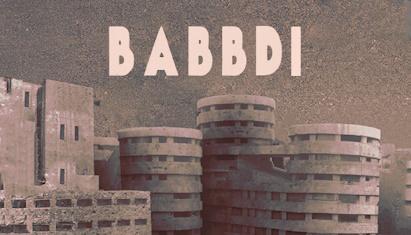 BABBDI is a single-player, first-person, exploration-based video game created by Sirius Lemaitre and Léonard Lemaitre and released in late 2022. The game is likely targeted towards players who enjoy individual exploration as the primary mechanic, as well an overall surreal and eerie experience.
BABBDI is a single-player, first-person, exploration-based video game created by Sirius Lemaitre and Léonard Lemaitre and released in late 2022. The game is likely targeted towards players who enjoy individual exploration as the primary mechanic, as well an overall surreal and eerie experience.
While A Brief History of the “Walking Simulator,” describes how the term “walking simulator” was initially meant to be a derogatory term, there is some truth to it. The story of BABBDI in particular relies exclusively on the player walking through the game world to be told. There is no structured narrative—how it unfolds depends entirely on how the player chooses to traverse the environment. There are also no additional mechanics that you would find in other genres of video games—no health, no combat, no enemies—truly the only thing the player can do is walk through BABBDI, picking up objects and talking to the people who inhabit along the way. Thus, rather than having explicitly planned or conveyed story beats, there is nothing but a general premise and a distant ending to work towards: escape BABBDI. It is up to the player to fill in the reset of the gaps. This structure in particular appeals to the player’s psychological need for information, to explore the strange world they are presented with and to seek knowledge about why BABBDI is the way it is as they walk through it. There is also an appeal to agency and autonomy inherent to it—the story that a player experiences is entirely up to their own actions.
To accomplish all this, especially in lieu of direct storytelling, BABBDI utilizes environmental storytelling instead, both through the physical environment itself and the NPCs and objects within it.
The larger setting—the city of BABBDI—is extremely depressing and oppressive. The city consists of a labyrinth of monolithic concrete buildings and structures, all of which are in various states of disrepair and ruin. Though player experience may differ based on individual skill-level and familiarity with the genre, to me, the city itself felt massive and disorienting. Many of the areas, in fitting in with the overall dystopian, brutalist aesthetic, also looked similar, and were full of alleys and corners to explore.


While there are ways to more directly get to the end goal of getting on the train out of BABBDI, BABBDI also specifically motivates exploration by appealing to players’ psychological materialistic needs. By encouraging players to find a set of hidden “secret objects” scattered throughout the city, they leverage the drive for acquisition and completion to get the player to think more about the environment, and thus, the implicit story. The maze-like spatial design that players are forced to experience as they collect these objects imparts some of the key truths of the world of BABBDI—that everyone wants to escape it and that it’s not so easy to do so.

This also comes through the interactions with the NPCs in BABBDI. Not only is the physical architecture of BABBDI eerie and liminal, but so too are the NPCs that the player encounters. Eyeless and decrepit looking, many of themlook like they are already dead. Some of them are incomprehensible or unresponsive when you talk to them.


More than just being simply disturbing, though, these NPC encounters are also important to the storytelling. Though most have a line or two of dialogue at most, together they depict a larger narrative of what life is like in BABBDI—and why your main goal in the first place is to escape. Walking through the game and finding these people to talk to is one of the main ways that the story is told. Similar to the way the secret objects function, this sort of implicit goal drives exploration and thus, the player experience of the larger story.
Overall, in order to experience the story of BABBDI at all, a player is required to walk through the world it presents. The mechanics of the game—the secret objects and NPCs, the overall goal, the lack of anything else to feasibly do—drive exploration and the conveyance of the story to the player through it.



